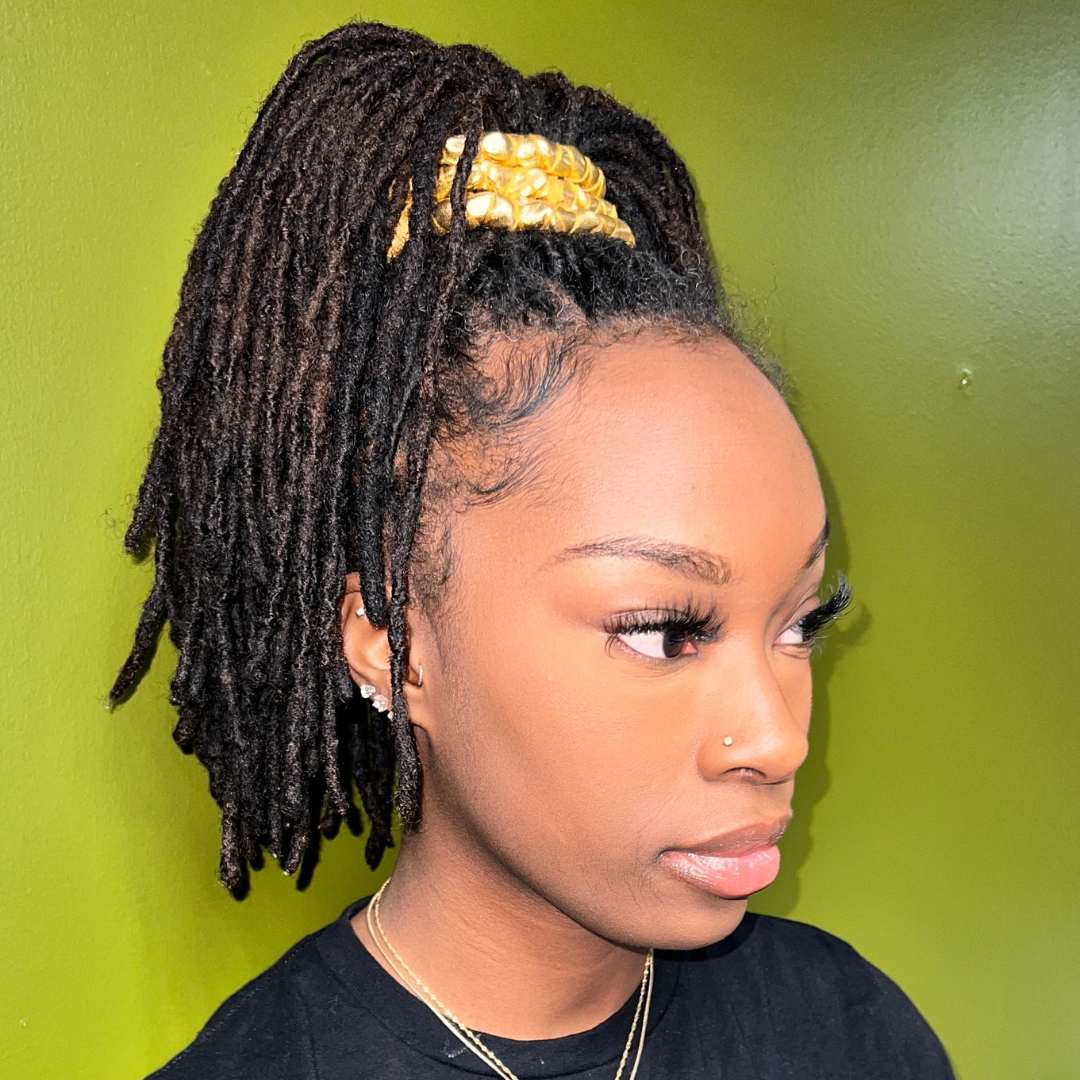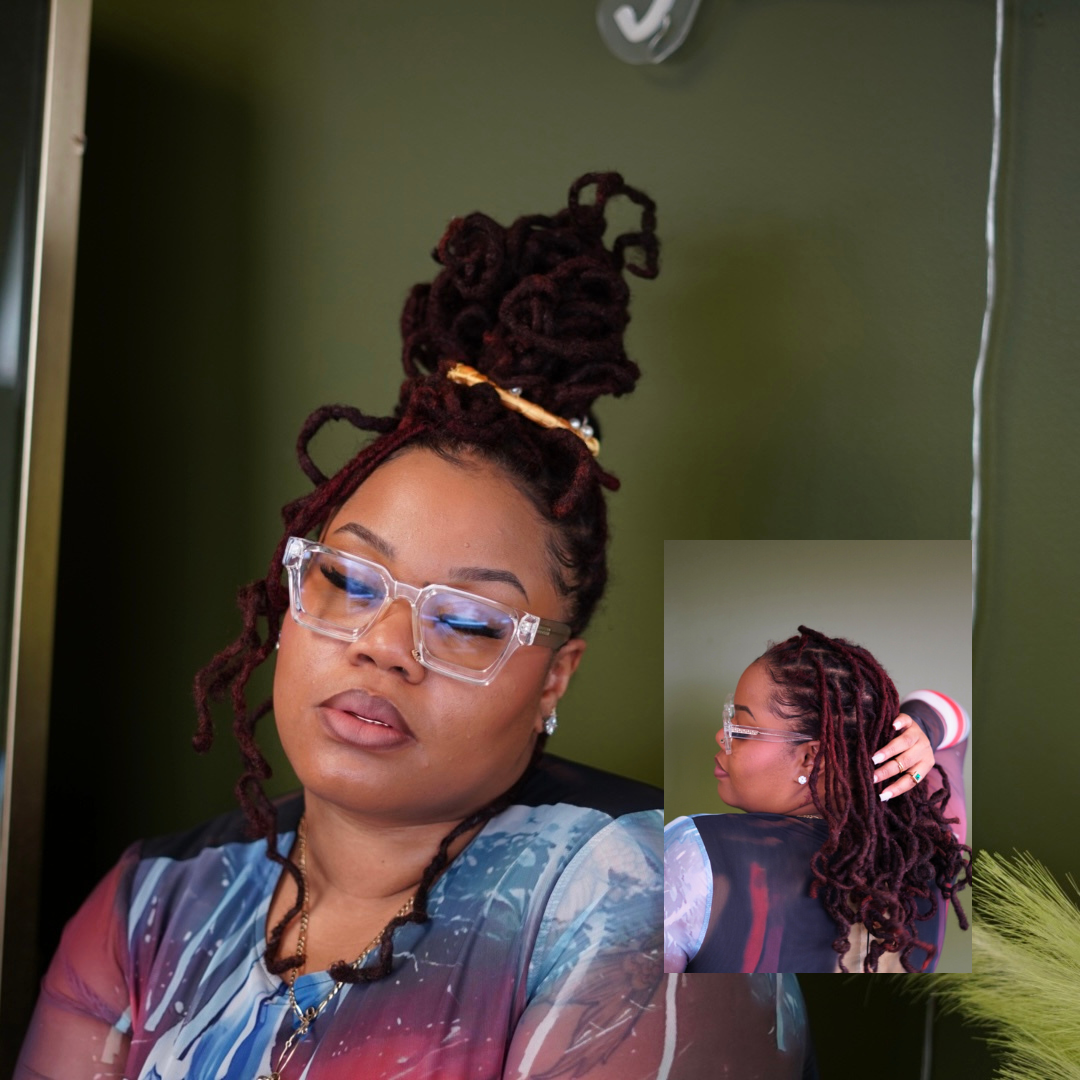
The 5 loc stages and what to expect
Share
There are 5 loc stages and each stage comes with expectations. “Locs”, also known as “dreadlocks”, is a hairstyle that involves intentionally matting and knotting sections of hair to create long, rope-like strands. The process of creating locs can take several months to several years depending on various factors, including hair texture and the method used to create or install the locs.
A typical journey towards achieving fully formed locs consists of five (5) stages. It is important to know these stages and understand what each one entails before you begin your loc journey. This will help you to understand the upkeep and commitment required, so you can then decide whether you’re willing to take them up.
Thus, we’ll be giving you a helping hand in this post. Here are the five stages of locs and what to expect during each stage.
1. Starter Locs
Basically, starter locs are the baby stage of your loc journey. Your hair will spend the months of its starter stage adjusting to being locked before it transitions. Starter locs are the most high-maintenance loc stage, regardless of what installation method you choose. The creation or installation methods for starter locs include free forming, backcombing, interlocking, three-strand plaits, two-strand twists, finger or comb coils, instant locs, or loc extensions.
What to expect:
- This stage lasts anywhere between the 3 to 6-month mark
- Hair begins to lock
- Hair likely unravels a lot and needs regular retwisting
- Maintenance requirements will be high
- Space out your wash days (every 3 weeks minimum)
- Keep styling minimal (low tension styles are key)
2. Budding Locs
In the “budding” or “sprouting” stage, you’ll observe that your hair will begin to matte or clump together at the ends of your starter locs. This will be especially apparent any time you wash your hair. Your locs will also begin to increase in thickness.
One thing that is most common at this stage is that you will have to constantly retwist your locs to maintain them. Consistent and thorough cleansing of your hair at this stage is also important.
What to expect:
- This stage lasts anywhere between the 6 to 12-month mark
- New growth is puffy or fuzzy
- Locs are likely frizzy
- Hair will need regular and thorough washing
- Hair will need a retwist routine
3. Teenage Locs
This is the stage of loc development that most people get ecstatic to hit. Known to some as the “locking” stage, your locs during the teen stage will really start to look like locs. They will become more defined and take on a more recognizable form.
The most defining features of locs at this stage are that they become almost twice as thick, and long enough to hang down. Your teenage locs may still be frizzy, but they will certainly be more distinct and less messy than in the starter stage.
What to expect:
- This stage lasts anywhere between the 12 to 15-month mark
- Locs are twice as thick
- Locs are long enough to play around with more styles
- Locs unravel much less
- Less retwisting is required
- Avoid products that cause too much buildup
4. Mature Locs
At the maturing stage, your locs become fully formed and will have taken on their permanent shape. Each loc will become denser, firmer, and closed off at the end. They will also be less frizzy and have a more uniform appearance. Your hair will continue to grow in this stage until it gets to the final locs stage.
What to expect:
- This stage lasts anywhere between the 15 to 18-month mark
- Locs are long enough to lie flat or hang down
- Locs are firmer
- Little to no retwisting is needed
- Styling possibilities are more flexible
5. Adult Locs
The adult or “rooted” stage is pretty much the finish line of your loc race. During this stage, your locs would have grown to their full length, and the roots would tighten. Your hair may have a smoother appearance and you will be able to style it in various ways.
One significant change in this stage is that your scalp will be healthier. Hence, you may need to adjust your hair care routine accordingly.
What to expect:
- This stage lasts from 18 months onwards
- Locs are firmly in place
- Locs feel heavier
- Locs could become more slender
- Locs will need regular trims to control deterioration at the ends
- Styling possibilities are endless!
- Always dry your locs thoroughly to prevent odor
Note: Maintaining a regular shampoo and hydration routine is essential throughout your loc journey, regardless of what stage.
Finally, it is important to note that everyone’s hair is different, and the time it takes to move through each stage can vary depending on factors like hair texture, maintenance, and lifestyle. With proper care and maintenance, your locs can last for years and remain a beautiful expression of your unique style.


